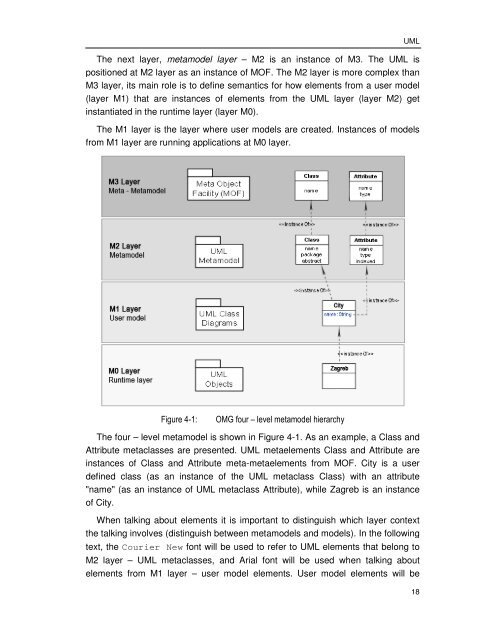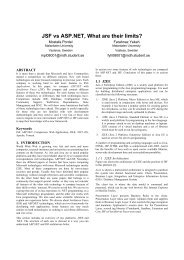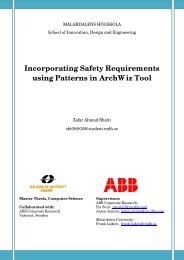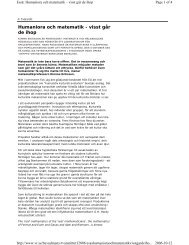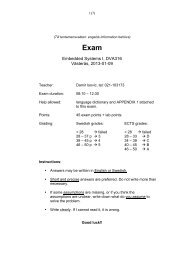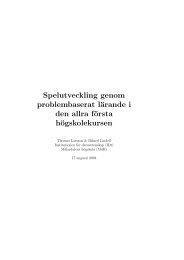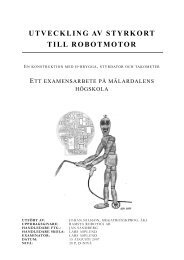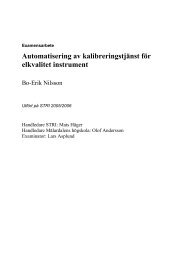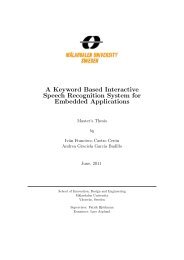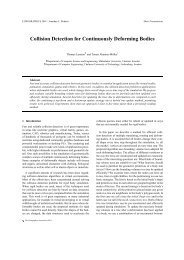UML PROFILE FOR SAVECCM - Research
UML PROFILE FOR SAVECCM - Research
UML PROFILE FOR SAVECCM - Research
Create successful ePaper yourself
Turn your PDF publications into a flip-book with our unique Google optimized e-Paper software.
<strong>UML</strong><br />
The next layer, metamodel layer – M2 is an instance of M3. The <strong>UML</strong> is<br />
positioned at M2 layer as an instance of MOF. The M2 layer is more complex than<br />
M3 layer, its main role is to define semantics for how elements from a user model<br />
(layer M1) that are instances of elements from the <strong>UML</strong> layer (layer M2) get<br />
instantiated in the runtime layer (layer M0).<br />
The M1 layer is the layer where user models are created. Instances of models<br />
from M1 layer are running applications at M0 layer.<br />
Figure 4-1: OMG four – level metamodel hierarchy<br />
The four – level metamodel is shown in Figure 4-1. As an example, a Class and<br />
Attribute metaclasses are presented. <strong>UML</strong> metaelements Class and Attribute are<br />
instances of Class and Attribute<br />
meta-metaelements from MOF. City is a user<br />
defined class (as an instance of the <strong>UML</strong> metaclass Class) with an attribute<br />
"name" (as an instance of <strong>UML</strong> metaclass Attribute), while Zagreb is an instance<br />
of City.<br />
When talking about elements it is important to distinguish which layer context<br />
the talking involves (distinguish between metamodels and models). In the following<br />
text, the Courier New font will be used to refer to <strong>UML</strong> elements that belong to<br />
M2 layer – <strong>UML</strong> metaclasses, and Arial font will be used when talking about<br />
elements from M1 layer – user model elements. User model elements will be<br />
18


